Why AC Capacitor Replacement Restores Your Cool Comfort
AC capacitor replacement is one of the most common yet critical repairs needed to restore your air conditioning system's performance. When your AC won't start, makes humming noises, or suddenly stops cooling your home, a failing capacitor is often the culprit.
Quick Answer for AC Capacitor Replacement:
- What it is: A small cylindrical part that stores electrical energy to start your AC's compressor and fan motor
- Signs you need replacement: Humming sounds, AC won't start, fan not spinning, warm air blowing
- Professional replacement: Typically takes 30-60 minutes with proper safety equipment
- DIY risks: High voltage shock hazard, potential system damage, voided warranties
- Lifespan: Most capacitors last 10-20 years before needing replacement
Your AC capacitor acts like a battery, storing and releasing electrical energy when your system needs that extra boost to start up. Without a working capacitor, your compressor and fan motors can't get the power surge they need to begin operation.
While the part itself is relatively inexpensive, the replacement process involves high-voltage electricity that can be dangerous without proper training and tools. A faulty capacitor left unaddressed can also damage your expensive compressor, turning a simple repair into a major system replacement.
The good news? Professional technicians can safely diagnose and replace a bad capacitor quickly, restoring your home's comfort and preventing costly damage to other components.
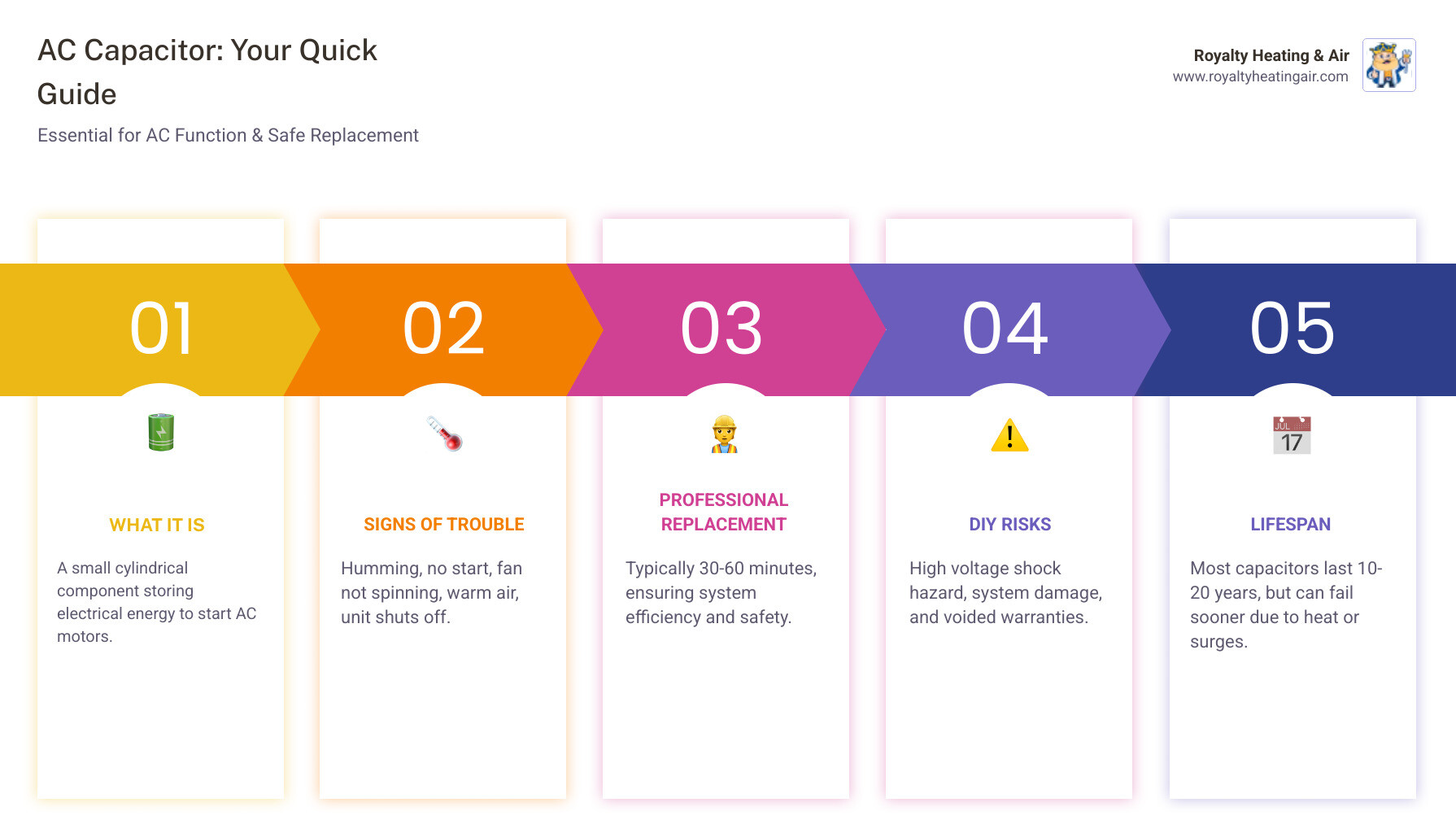
Understanding the AC Capacitor and Spotting Trouble
Within the intricate network of wires, components, and connectors behind your air conditioner's access panel lies a seemingly simple yet vitally important part: the capacitor. This unsung hero is crucial for your AC's ability to kick into gear and keep your home cool.
What is an AC Capacitor?
An AC capacitor is a small, cylindrical device that stores and releases electrical energy. Think of it like a temporary electrical energy reservoir for your AC unit. Its primary job is to provide the initial burst of power, or "jolt," needed to start the motors in your air conditioning system. These motors include the compressor, the blower motor (which moves air inside your home), and the outdoor fan motor. Without this initial boost, these heavy-duty motors would struggle or fail to start.
Capacitors collect charged particles along two plates and store energy for a short period. Unlike batteries, which store energy for longer durations and release it slowly, capacitors charge up very quickly and can emit their stored energy rapidly to supply a lot of power on demand. This rapid discharge is exactly what a motor needs for its initial spin.
To learn more about how capacitors work, you can explore their function in general electronics: What is a capacitor?
Common Signs of a Failing Capacitor
When an AC capacitor starts to fail, your air conditioning system will often exhibit a variety of tell-tale symptoms. Recognizing these signs early can save you from a complete system breakdown and potentially more expensive repairs down the line.
Here are the common indicators that your AC capacitor might be on its way out:
- Humming or Clicking Noises: If your outdoor AC unit is making a persistent humming or clicking sound but the fan isn't spinning, or the compressor isn't starting, it's a strong sign of a struggling capacitor. The motor is trying to start but isn't getting enough power to overcome its inertia.
- AC Unit Won't Start: This is perhaps the most obvious symptom. If your AC simply refuses to turn on at all, or takes a very long time to start, a faulty capacitor is a primary suspect. The capacitor isn't providing the necessary "kick" to get things going.
- Fan Not Spinning: The outdoor fan motor relies on the capacitor to start. If the AC unit turns on (you might hear the compressor humming) but the outdoor fan blade isn't spinning, or you can manually spin it to get it going, the fan section of the capacitor is likely bad.
- AC Blowing Warm Air: If your AC is running but the air coming from the vents isn't cool, or is only lukewarm, it could be due to a failing capacitor affecting the compressor. The compressor, which is responsible for the cooling cycle, might not be running efficiently or at all.
- System Shuts Off Unexpectedly: A capacitor that can't maintain a steady flow of energy to the motors can cause your AC to run for a short period and then shut down randomly. This inconsistent operation is often a sign of a failing run capacitor.
- Bulging or Leaking Capacitor: This is a visual cue that's often definitive. If you can safely access your outdoor unit (after turning off power, of course!) and see that the top of the cylindrical capacitor is bulging, or there's any visible leakage or burnt spots, it's definitely time for a AC capacitor replacement.
- Increased Energy Bills: A capacitor that isn't functioning correctly forces your AC motors to work harder to start and run. This increased strain can lead to your system consuming more electricity, resulting in unexpectedly higher energy bills.
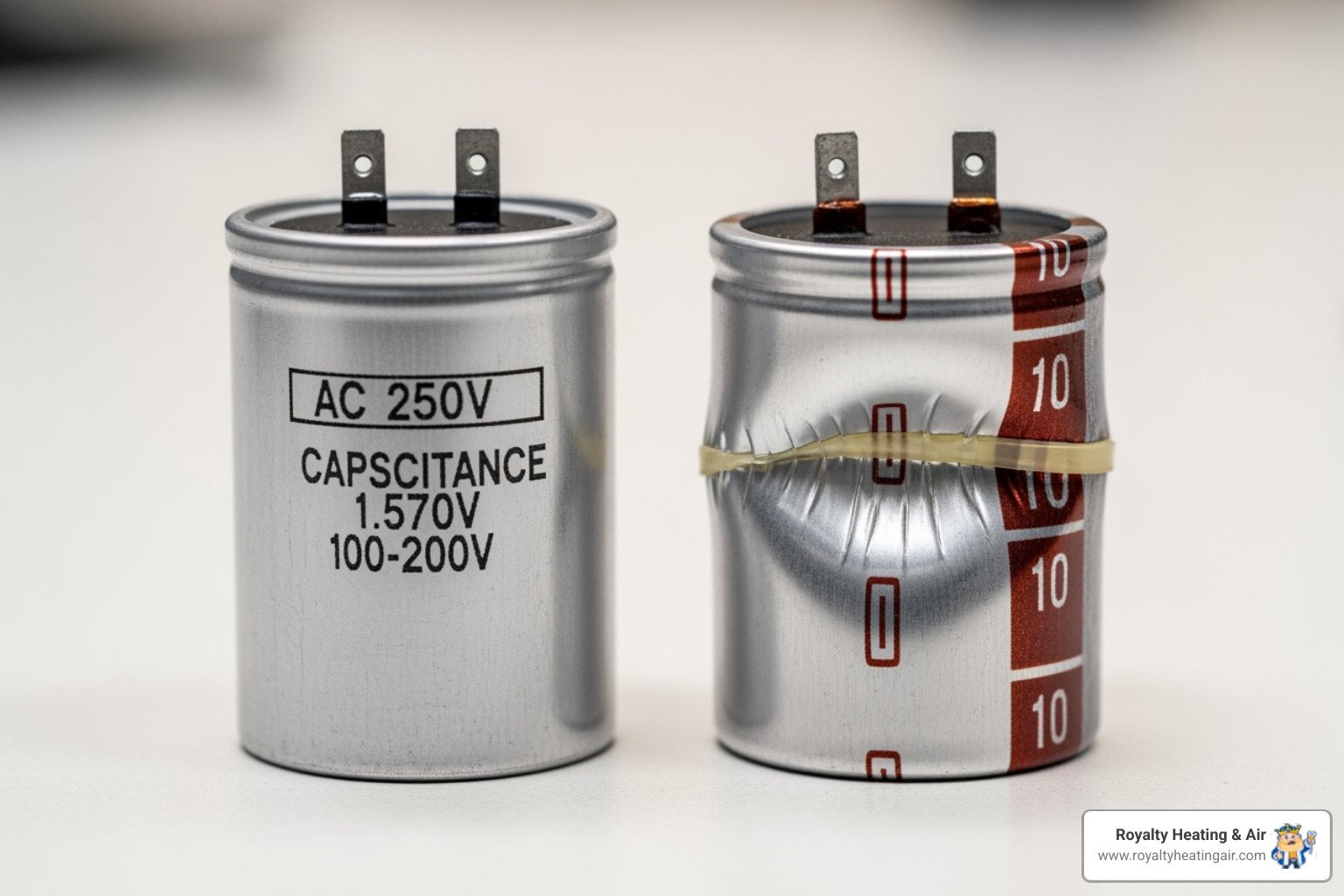
If you notice any of these signs, it's wise to consider a professional inspection. Addressing a failing capacitor promptly can prevent further damage to your AC system, especially to the expensive compressor.
Types of AC Capacitors and Identifying the Right Part
Understanding the different types of AC capacitors and how to read their labels is key to ensuring your system gets the right replacement part. While they all store energy, their specific roles and configurations can vary.
Start vs. Run vs. Dual-Run Capacitors
Air conditioners typically use one or more types of capacitors, each with a distinct role in the system's operation.
- Start Capacitor: This capacitor provides a large, temporary burst of energy to the motor, typically the compressor, to help it overcome its initial inertia and start spinning. It's designed for short-term use during startup and then disengages from the circuit. If your AC unit hums but won't start, a failing start capacitor is a prime suspect.
- Run Capacitor: Unlike the start capacitor, the run capacitor remains in the circuit continuously while the motor is operating. Its job is to ensure a smooth, continuous flow of energy, maintaining the motor's efficiency and helping it run smoothly. If your AC unit struggles to maintain consistent cooling, shuts off unexpectedly, or runs less efficiently, a failing run capacitor could be the cause.
- Dual-Run Capacitor: This is a common and efficient component found in many modern AC units. A dual-run capacitor combines the functions of both a run capacitor for the compressor and a run capacitor for the outdoor fan motor into a single, compact unit. It typically has three terminals: "C" (Common), "HERM" (for the hermetically sealed compressor), and "FAN" (for the outdoor fan). This design saves space and simplifies wiring. If one section of a dual-run capacitor fails, the entire unit must be replaced.
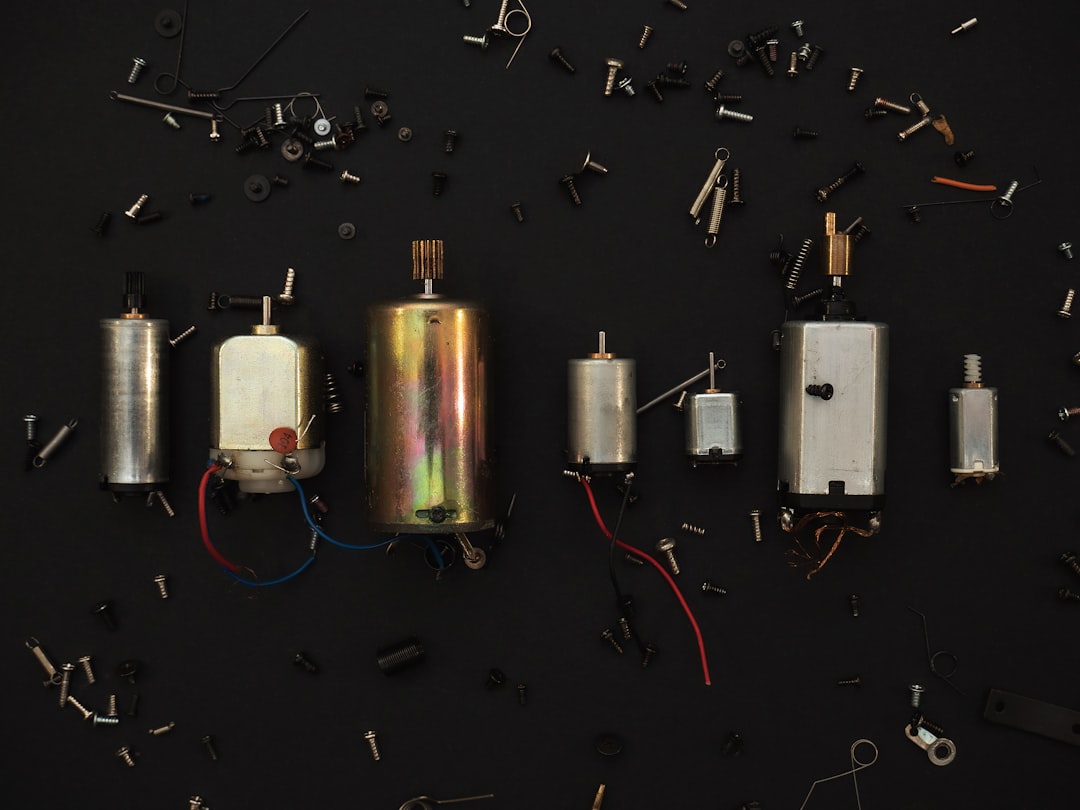
How to Read a Capacitor Label
Choosing the correct replacement capacitor is crucial for your AC unit's proper function and longevity. The necessary specifications are printed directly on the capacitor's label. Here's what you need to look for:
- Microfarad (µF) Rating (Capacitance): This indicates the capacitor's energy storage capacity. It's usually listed as a number followed by "µF" or "MFD" (e.g., 45/5 µF). For a dual-run capacitor, you'll see two numbers, like "45/5 µF." The first number (45 µF) is for the compressor (HERM terminal), and the second number (5 µF) is for the fan motor (FAN terminal). It's essential to match this rating exactly, or very closely (within 5-10%), to the original capacitor.
- Voltage Rating (VAC): This indicates the maximum voltage the capacitor can safely handle (e.g., 370 VAC, 440 VAC). It's critical that the replacement capacitor has a voltage rating equal to or higher than the original. Never use a capacitor with a lower voltage rating, as it can lead to premature failure and potentially dangerous electrical issues. Most AC capacitors operate at 370 or 440 Volts.
- Physical Dimensions and Shape: Capacitors come in various shapes and sizes, most commonly round or oval. Ensure the new capacitor's physical dimensions (height and diameter) allow it to fit securely in the mounting bracket within your AC unit. While some units can accommodate either shape, it's generally best to stick to the original shape if space is limited.
- Terminal Configuration: Look at the number and arrangement of terminals (prongs) on the top of the capacitor. Single capacitors usually have two or four terminals, while dual-run capacitors typically have three distinct sets of terminals labeled "C" (Common), "HERM" (Compressor), and "FAN" (Fan). Make sure the replacement capacitor has the same terminal configuration to ensure proper wiring connections.
When selecting a replacement, having the old capacitor in hand or a clear picture of its label is incredibly helpful. This ensures you match all the critical specifications for a seamless and effective AC capacitor replacement.
The Critical Choice: DIY vs. Professional AC Capacitor Replacement
When faced with a failing AC capacitor, many homeowners consider a do-it-yourself (DIY) approach. While the part itself might be affordable, the decision to undertake a AC capacitor replacement yourself carries significant risks. We strongly advise against DIY capacitor replacement due to the inherent dangers and complexities involved.
Key Safety Precautions for AC Capacitor Replacement
Working with electrical components, especially high-voltage ones like AC capacitors, demands extreme caution. Even when the power to your AC unit is turned off, a capacitor can retain a dangerous electrical charge, capable of delivering a severe, even fatal, electric shock.
If you are ever tempted to handle a capacitor yourself, these are the absolute minimum safety steps that must be taken:
- Disconnect All Power: Always, always, always turn off the power to your entire AC unit at both the thermostat and the main circuit breaker panel. Do not proceed until you are absolutely certain the power is off.
- Verify No Voltage: Use a multimeter to confirm that no voltage is present at the capacitor terminals before touching them. This is a crucial step that many DIY enthusiasts overlook, and it's where the danger lies.
- Discharge the Capacitor: Even after power is off, a capacitor can hold a significant electrical charge. It must be safely discharged. Professionals use specialized tools for this, but a common (and still risky) DIY method involves using an insulated screwdriver to bridge the terminals. This will release the stored charge, often with a visible spark and audible pop. Be extremely careful not to touch the metal part of the screwdriver or the terminals. For a detailed guide on discharging, refer to: How to Discharge a Capacitor.
- Use Insulated Tools and Personal Protective Equipment (PPE): Always wear electrician's work gloves and safety glasses. Use only insulated tools designed for electrical work.
These precautions are not suggestions; they are critical requirements when dealing with high-voltage components. The risks of electrical shock, burns, and even electrocution are very real.
Why Professional AC Capacitor Replacement is the Safest Choice
Given the high-voltage nature of AC capacitors and the critical role they play in your system, opting for professional AC capacitor replacement is not just a convenience—it's a necessity for safety, efficiency, and peace of mind.
Here's why we always recommend calling a professional:
- Proper Diagnosis: Our certified technicians have the expertise and specialized tools (like multimeters with capacitance functions) to accurately test your capacitor and confirm it's the root cause of your AC issues. They can distinguish between a capacitor problem and other, more complex issues that might mimic the symptoms.
- Correct Part Selection: As discussed, matching the microfarad and voltage ratings precisely is crucial. Professionals ensure the correct replacement capacitor is used, preventing compatibility issues and premature failure. We also understand the nuances of start, run, and dual-run capacitors.
- Safe Handling of High-Voltage Components: Our technicians are trained in electrical safety protocols, including proper power disconnection, voltage verification, and safe capacitor discharge techniques. They know how to handle these components without risking injury.
- Preventing Damage to the Compressor: A failing capacitor can put immense strain on your AC's compressor, potentially leading to its failure. Attempting a DIY replacement incorrectly can also damage the compressor or other sensitive components. Professionals ensure the replacement is done correctly, protecting your system's most expensive part.
- Ensuring System Runs Efficiently Post-Repair: Beyond just replacing the part, our technicians will ensure all connections are secure, the new capacitor is properly mounted, and the system is tested to verify optimal operation. This ensures your AC runs efficiently and reliably after the repair.
- Maintaining Warranty: Many HVAC manufacturers and even home warranty companies require repairs to be performed by licensed professionals to keep your system's warranty valid. DIY repairs often lead to voided warranties, costing you more in the long run.
- Peace of Mind: Knowing that a critical, high-voltage component has been handled safely and correctly by a qualified expert provides invaluable peace of mind. You can rest assured your AC is running properly and safely.
While a DIY AC capacitor replacement might seem like a way to save money, the potential risks of injury, further system damage, and voided warranties far outweigh any perceived savings. Trust us, your safety and the longevity of your AC system are worth the professional touch.
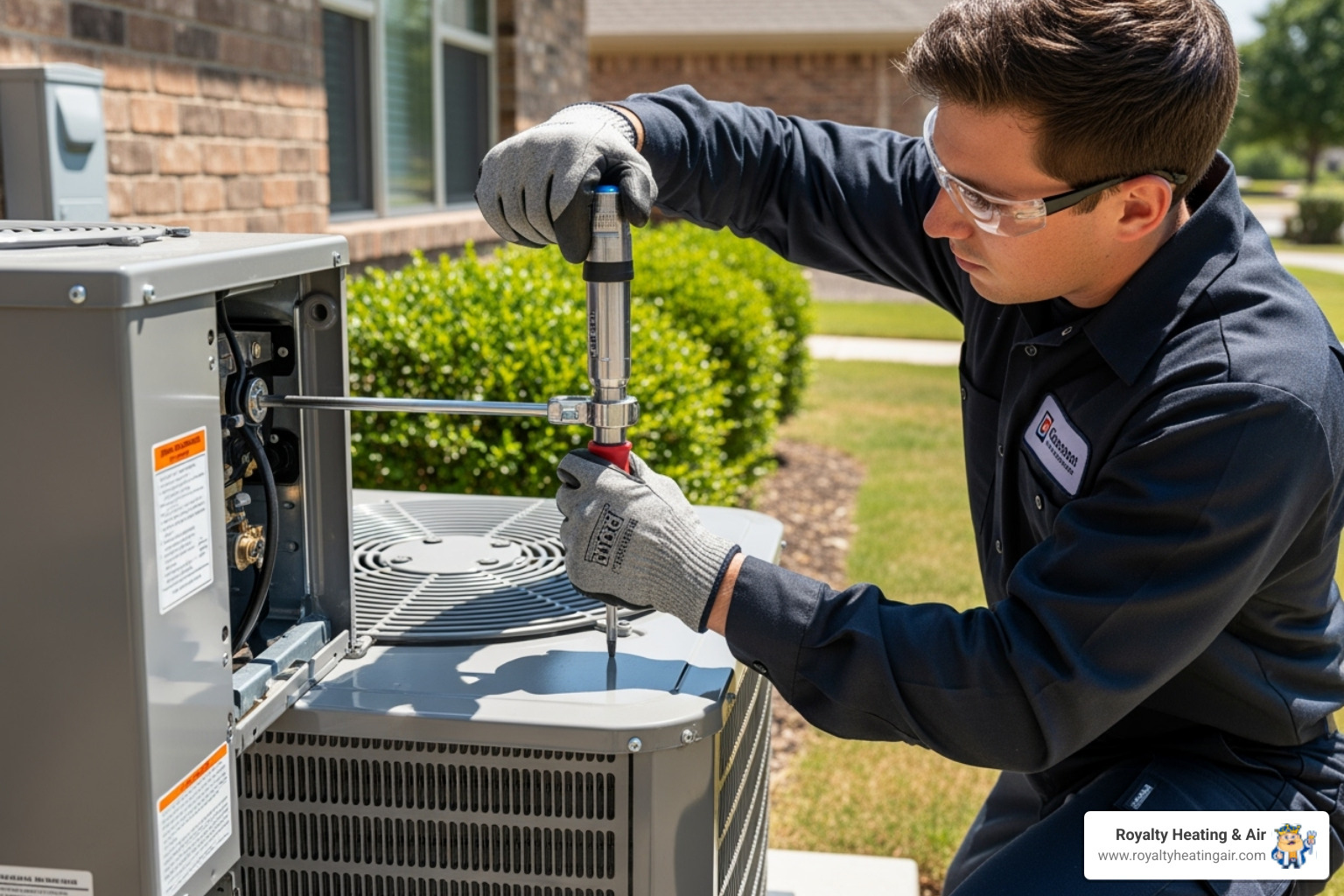
Capacitor Lifespan, Failure Causes, and Proactive Care
Even the most robust components in your AC system have a finite lifespan, and capacitors are no exception. Understanding how long they typically last, what causes them to fail, and how to care for them can help you prevent unexpected breakdowns and extend the life of your entire air conditioning system.
How Long Do AC Capacitors Last and What Causes Them to Fail?
The lifespan of an AC capacitor can vary, but most capacitors typically last between 10 to 20 years. However, some may begin to show signs of failure after just 8-10 years, depending on various factors.
Several elements contribute to a capacitor's demise:
- Age-Related Wear and Tear: Like any electrical component, capacitors degrade over time. The dielectric material inside them breaks down with continuous use, reducing their ability to store and release charge effectively.
- Extreme Heat: AC units, especially the outdoor condenser, operate in challenging environments. Prolonged exposure to high temperatures and direct sunlight can significantly shorten a capacitor's lifespan. Heat accelerates the chemical reactions within the capacitor, leading to premature failure. In areas with prolonged humidity and hot weather, capacitors may need replacement after about 15 years.
- Power Surges and Lightning Strikes: Sudden spikes in electrical voltage, whether from utility grid fluctuations or direct lightning strikes, can instantly overload and destroy a capacitor. Even minor, repeated surges can gradually wear it down.
- Oversized or Incorrect Capacitor: Installing a capacitor with incorrect specifications (e.g., lower voltage rating, wrong microfarad rating) can cause it to work harder than designed, leading to early failure.
- Lack of Maintenance: A dirty outdoor unit that restricts airflow causes the system to work harder and generate more heat, putting added strain on the capacitor and other components.
- Continuous Running/Overuse: AC systems that run almost constantly, especially during peak summer months, place more demand on their components, including the capacitor, which can shorten its life.
How to Maintain Your AC System to Prolong Capacitor Life
While you can't prevent all capacitor failures, adopting proactive maintenance habits can significantly extend their lifespan and the overall health of your AC system.
- Regular Professional Tune-Ups: This is perhaps the most crucial step. Our professional HVAC technicians can inspect your capacitor during routine maintenance visits, checking for signs of wear, testing its capacitance, and addressing any potential issues before they escalate. This early detection can save you from inconvenient breakdowns.
- Keeping the Outdoor Unit Clean: Ensure your outdoor condenser unit is free from dirt, debris, leaves, and overgrown vegetation. A clean unit allows for proper airflow, which helps dissipate heat and reduces the strain on internal components, including the capacitor. We recommend hosing down the coils gently a few times a season.
- Ensuring Proper Airflow: Beyond keeping the unit clean, ensure there's adequate clearance around the outdoor unit (at least 2 feet on all sides). Restricted airflow forces the system to work harder, generating more heat and stressing the capacitor.
- Checking for Voltage Issues: While this is typically a professional task, if you experience frequent power fluctuations or observe dimming lights in your home, it might indicate voltage issues that could be affecting your AC's capacitor. Consider investing in a whole-home surge protector, installed by a qualified electrician, to safeguard your HVAC system from power spikes.
- Proactive Replacement: If your capacitor is nearing the end of its typical lifespan (e.g., 8-10 years) and you're already scheduling a tune-up, discussing a proactive replacement with your technician might be a good idea. This can prevent an inconvenient breakdown during the hottest part of summer.
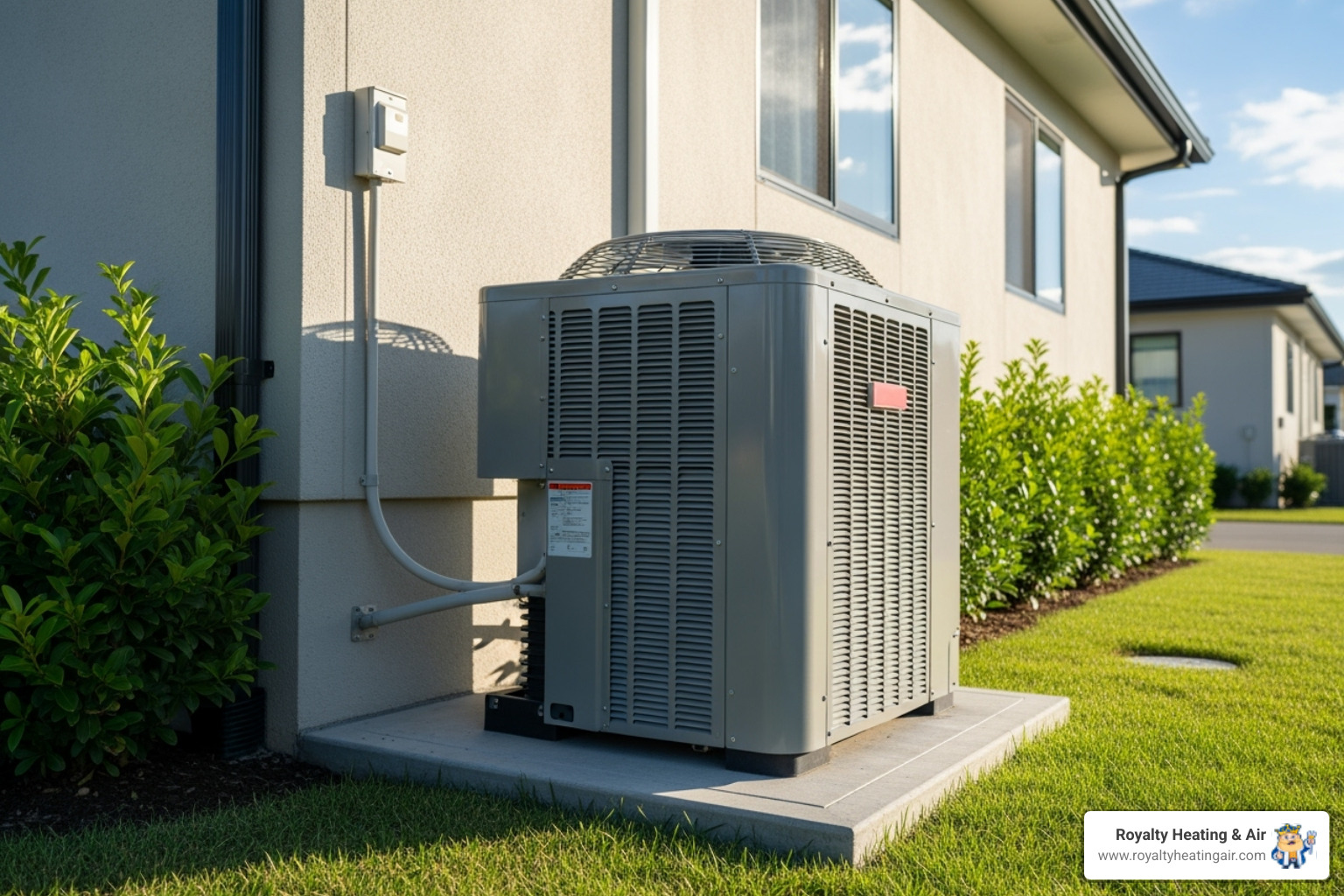
By following these maintenance tips and addressing potential issues promptly, you can help ensure your AC capacitor and your entire cooling system perform reliably for years to come.
Frequently Asked Questions about AC Capacitors
We often get questions about AC capacitors from curious homeowners. Here are some of the most common ones:
Can a bad capacitor ruin my AC compressor?
Yes, absolutely. A failing or "bad" capacitor can indeed ruin your AC compressor, which is the heart of your air conditioning system and its most expensive component to replace.
Here's how it happens:
- Struggling to Start: The capacitor provides the initial burst of energy (starting torque) that the compressor motor needs to get going. If the capacitor is weak or faulty, the compressor will struggle to start, drawing excessive current in the process. This is known as "hard starting."
- Overheating: When the compressor struggles or tries to start repeatedly without success, it generates a lot of heat. This excessive heat can quickly damage the compressor's internal windings, seals, and lubrication.
- Increased Wear and Tear: The constant strain and overheating put immense stress on the compressor's mechanical and electrical components, leading to increased wear and tear and ultimately, premature failure.
- Electrical Issues: A faulty capacitor can also send inconsistent or incorrect electrical signals to the compressor, further contributing to its breakdown.
A bad capacitor forces the compressor to work harder than it's designed to, leading to a cascade of problems that can result in a complete compressor burnout. Replacing a failing capacitor promptly is a small investment that can save you from a much larger, more costly compressor replacement down the road.
How many capacitors are in a typical AC unit?
Most central air conditioning units typically have either one or two capacitors.
- One Dual-Run Capacitor: This is the most common configuration in modern residential AC units. A single dual-run capacitor serves both the compressor and the outdoor fan motor. It has three terminals labeled "C" (Common), "HERM" (for the compressor), and "FAN" (for the fan). This compact design is efficient and saves space.
- Two Separate Capacitors: Older or some specialized AC systems might have two distinct capacitors: a separate start capacitor for the compressor and a separate run capacitor for the compressor and/or the outdoor fan motor.
Additionally, some furnace systems also have a capacitor specifically for the blower fan motor, which helps circulate air throughout your home for both heating and cooling.
Will the AC fan run if the capacitor is bad?
It depends on which part of the capacitor is bad and which fan you're referring to.
- Outdoor Condenser Fan: If the capacitor section responsible for the outdoor condenser fan motor fails (on a dual-run capacitor, this would be the "FAN" terminal, or if it's a dedicated fan capacitor), then the outdoor fan may struggle to start, not start at all, or run at a reduced speed. You might hear the compressor humming, but the fan blade won't be spinning. This prevents proper heat dissipation, leading to poor cooling performance and potential system overheating.
- Indoor Blower Fan: The indoor blower fan, which circulates air through your home's ducts, also has a capacitor. If this capacitor fails, the indoor fan may not turn on, resulting in no airflow from your vents, even if the outdoor unit is running.
In either case, a non-working fan due to a bad capacitor will prevent your AC system from cooling your home effectively and can lead to other components, like the compressor, overheating and failing.
Your Partner for Safe and Reliable AC Repair
At Royalty Heating & Air, we understand that a malfunctioning AC unit can quickly turn your comfortable home into a sweltering oven, especially during those warm Roseville summers. When your comfort is on the line, you need a partner you can trust for safe, efficient, and reliable AC capacitor replacement and other HVAC services.
We pride ourselves on our team of skilled, licensed professionals who are not only experts in HVAC repair but also dedicated to ensuring your safety and satisfaction. We handle every job with the utmost care, from proper diagnosis to safe handling of high-voltage components, ensuring your AC system is restored to optimal performance. Our commitment to excellence means we use the right tools, the correct parts, and follow industry best practices for every service call.
Beyond providing top-notch HVAC services in Roseville, Loomis, Rocklin, Lincoln, and Granite Bay, we are deeply committed to our community. We are proud partners with the MackAttack Foundation, supporting foster babies and sponsoring family adoptions. When you choose Royalty Heating & Air, you're not just getting exceptional service; you're also helping us contribute to a cause that truly matters.
Don't let a faulty capacitor leave you in the heat. Let us bring our expertise and commitment to your home, restoring your cool comfort safely and effectively.
Get professional AC service in Roseville, CA




